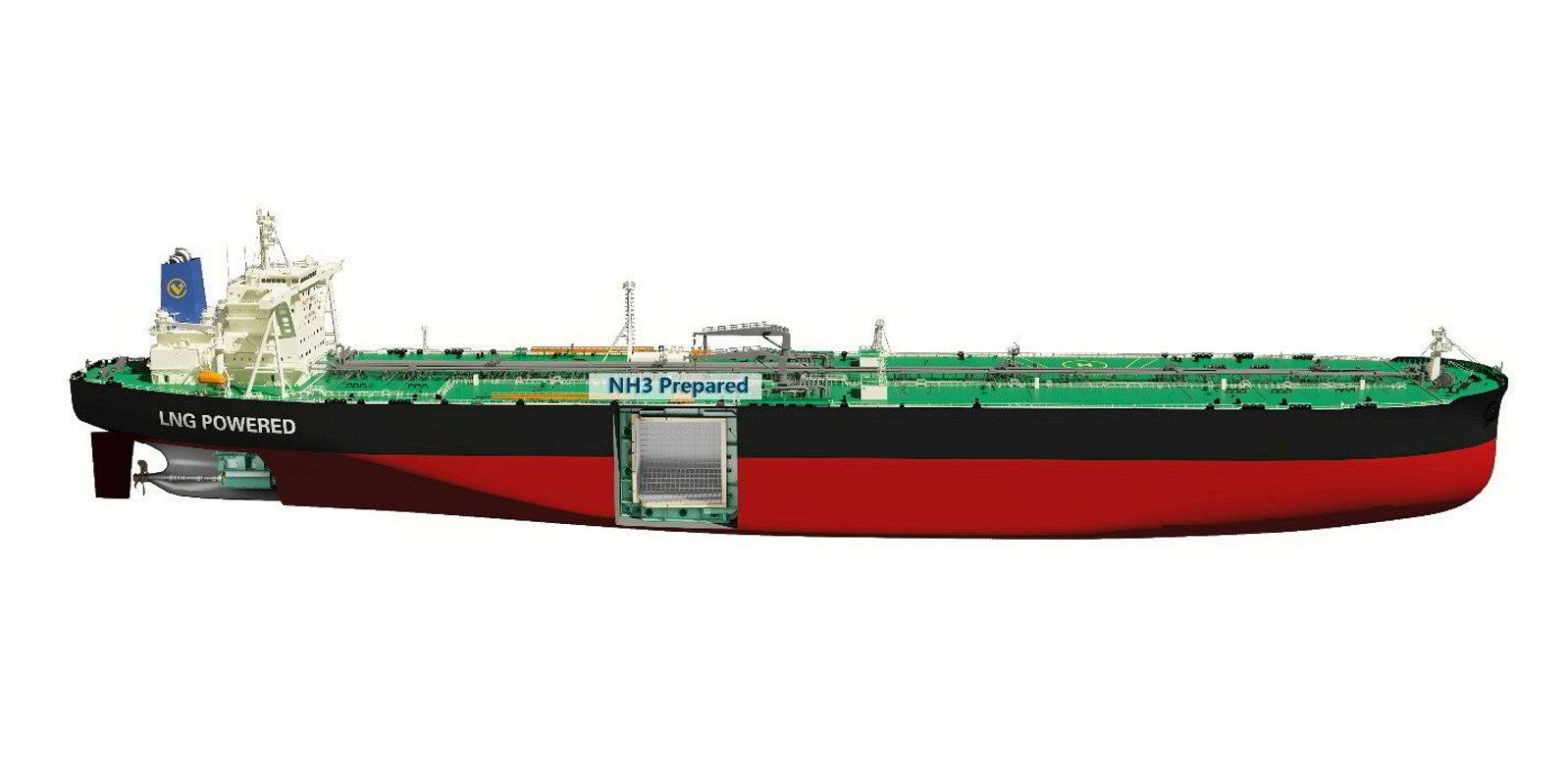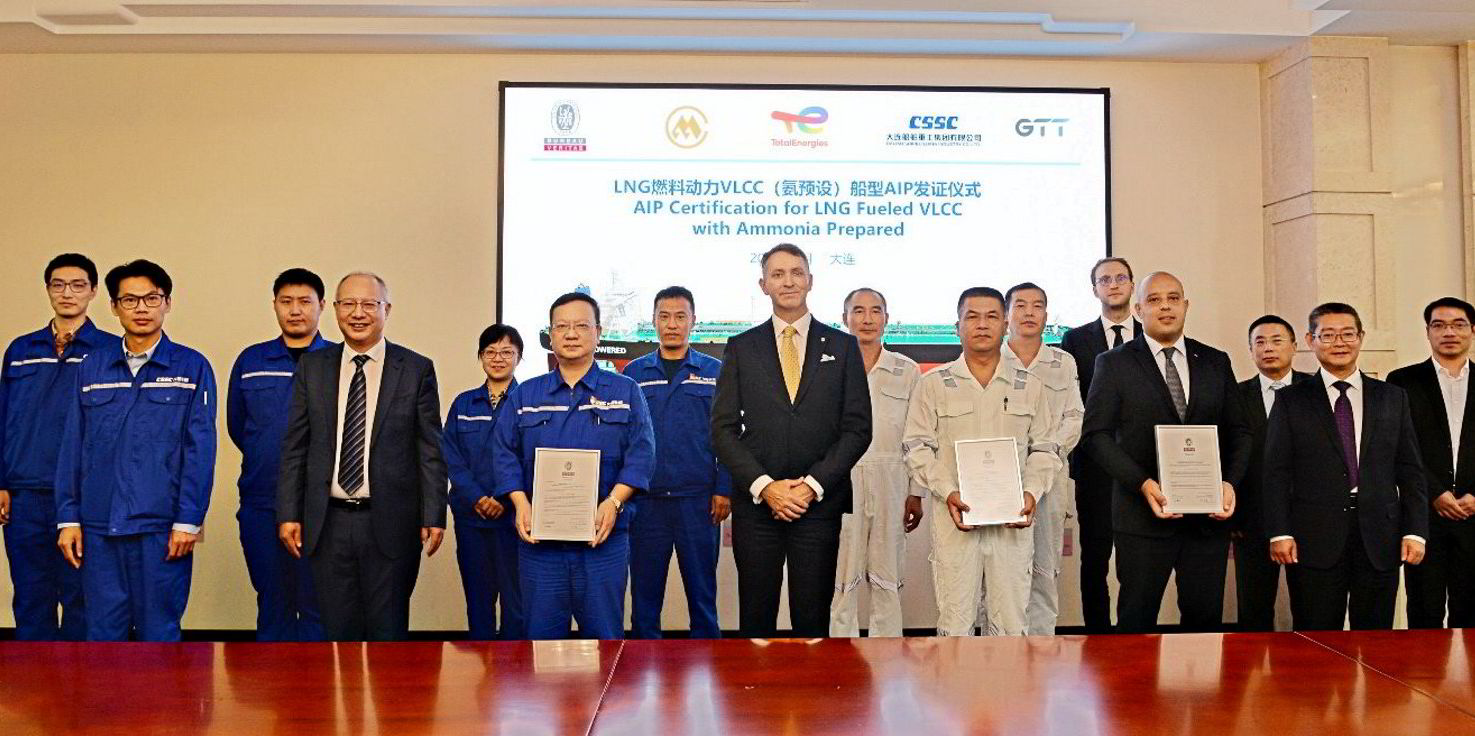A design for an LNG-fuelled, ammonia-ready VLCC developed jointly by shipowner China Merchants Energy Shipping Co (CMES), energy major TotalEnergies, Dalian Shipbuilding Industry Co and cargo containment designer GTT has won Approval in Principle from classification society Bureau Veritas.
The VLCC design, which is the result of a Joint Design Project Cooperation Agreement signed in 2021. that kicked off in 2021, would bunker LNG that would be stored in GTT-designed Mark III membrane-type tanks.
The fuel tank would be located under the main deck to avoid weather exposure, piracy risk and lower the propulsion system’s centre of gravity, BV said.
GTT explained that as ammonia is heavier than LNG, the structure of the tank has been strengthened to support the loads induced on the vessel and the tank.
The bunker tank has been designed to have a flexible capacity ranging from 9,000-cbm to 14,000-cbm, which BV said is based on VLCC worldwide shipping routes and complies with the strength requirements of both LNG and ammonia.
The vessel has been designed to run on LNG fuel starts for a minimum of 23,000 nautical miles and 17,000 nautical miles at design condition.
The bunker tank is compatible with liquid ammonia fuel, giving the owner and charterer greater operational flexibility, the class society added.
The VLCC concept complies with key environmental requirements, its Energy Efficiency Design Index (EEDI) is more than 40% under the base line, its Nitrogen Oxides (NOX) emissions meet the IMO’s Tier III requirements, and its Carbon Intensity Index (CII) is projected to be rated A by 2030.
CMES technical director Wu Jianyi said:“The achievement today is a milestone of CMES’ Path to zero-carbon shipping. “.. the joint team is building up not only a vessel but also a greener future for our offspring,” he added.
GTT China general manager Adnan Ezzarhouni said: “This concept of multi-fuel VLCC with enhanced endurance not only enables safer and more efficient operations, but also offers greater bunkering flexibility for ship owners and charterers towards a carbon-free future.”







